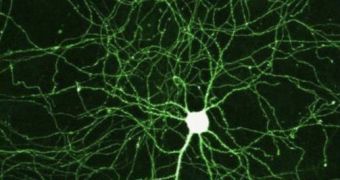Researchers at the University of California in San Diego (UCSD) announce that they have been able to develop a new method of casting more light on the elusive field of research that is brain chemistry. They say that the new technique allows them to understand how various chemicals act inside the human brain, and also how these substances affect the overall function of the cortex. The researchers note that their method relies on the use of special cells, which are capable of changing their colors when exposed to various types of chemicals, the BBC News reports.
In their work, which was published in the latest issue of the renowned scientific journal Nature Neuroscience, the UCSD experts add that the proof-of-concept was achieved as they were tracing the effects of a new class of schizophrenia drugs on the brain. This brain disorder is very peculiar because sufferers tend to experience delusions and hallucinations, while at the same time having difficulties sustaining attention for longer periods of time, or recalling information. One class of drugs that is usually prescribed in such instances is called atypical neuroleptics.
These substances appear to ameliorate the conditions of schizophrenia, but, until now, scientists had no idea as to how exactly the drugs altered brain chemistry. By using CniFER – biological cells – the experts were able to study the formation and release of the acetylcholine, which is produced in large amounts in people taking atypical neuroleptics. For the first time ever, the research team was able to follow the path taken by the chemical inside the living brain. Undoubtedly, they say, this new tracking method can be adapted for uses on chemicals characteristic to other brain disorders as well.
“This study shows the value of mental health research. It is eliciting new information that could lead to the development of more effective drug treatments for schizophrenia, which have fewer of the debilitating side-effects associated with even the most modern atypical medicines. That in itself would benefit millions of people around the world. But the research also offers a new technique for understanding the workings of the brain that could also be developed for use across broad areas of medicine,” mental health charity Rethink representative Paul Corry says.
“We really do need to recognize that mental health research is starved of funds compared to other areas of medicine and recognize also that much of it takes place at the frontiers of our understanding which means that results from it could have far-reaching applications,” he concludes.

 14 DAY TRIAL //
14 DAY TRIAL //